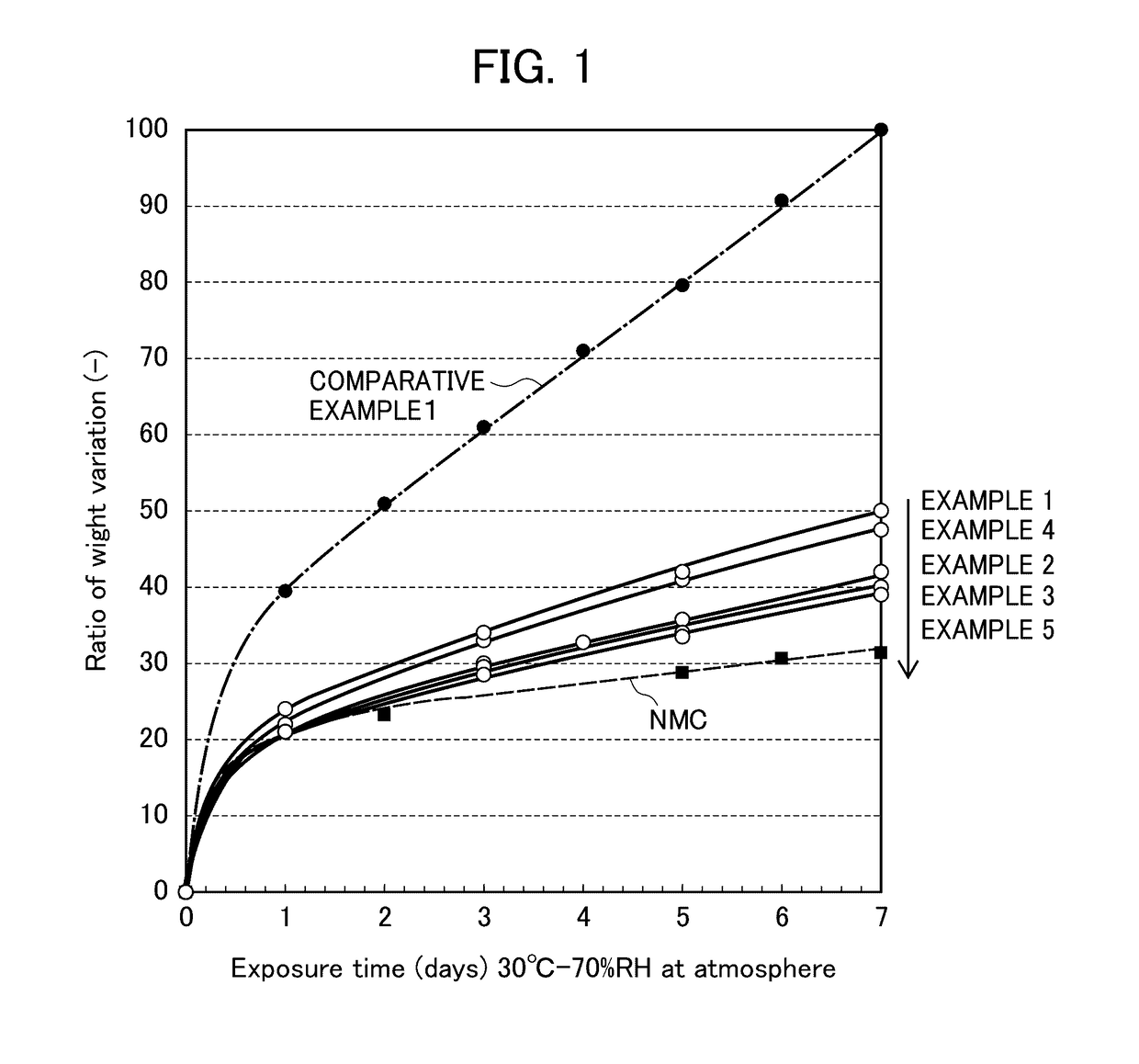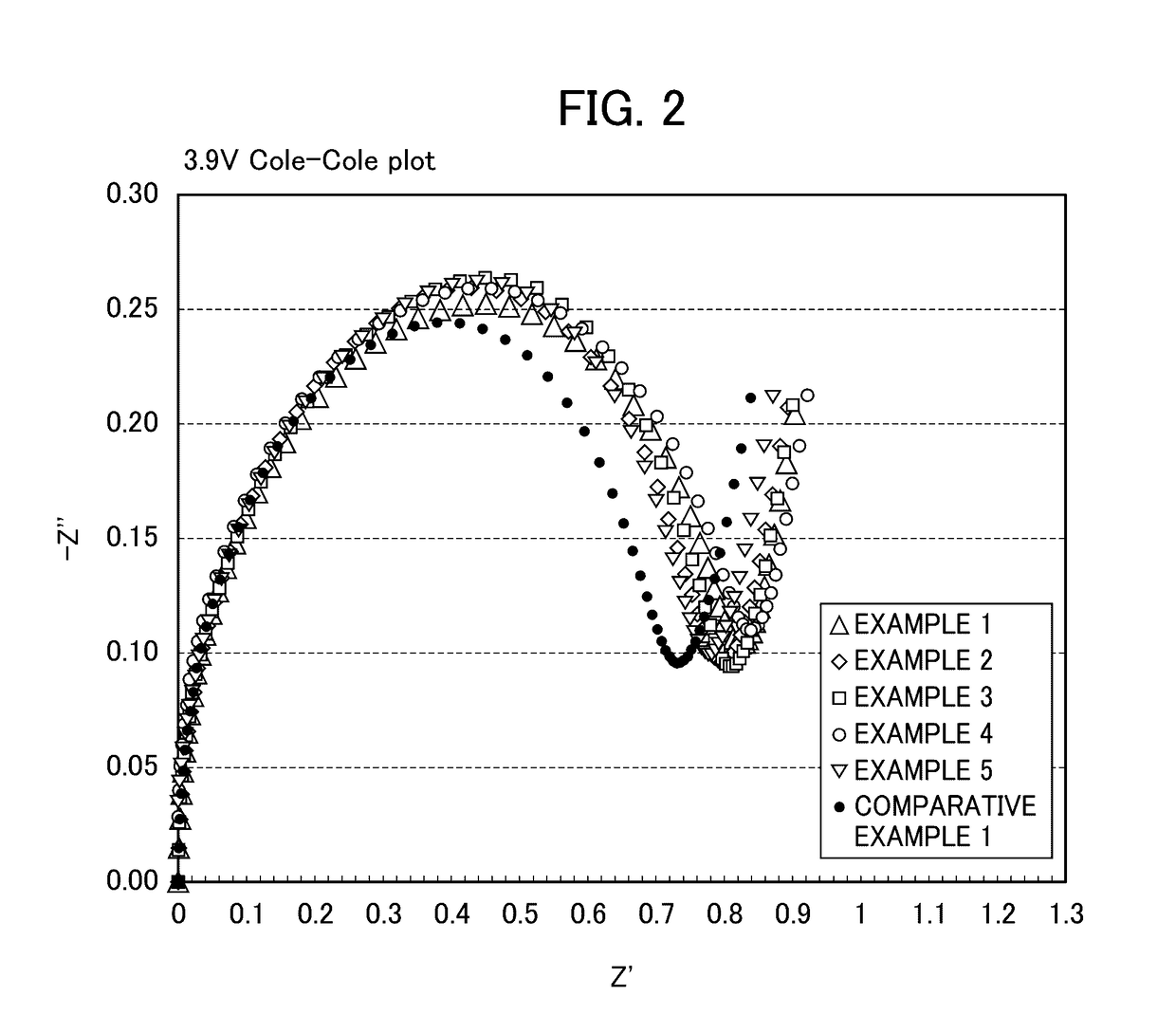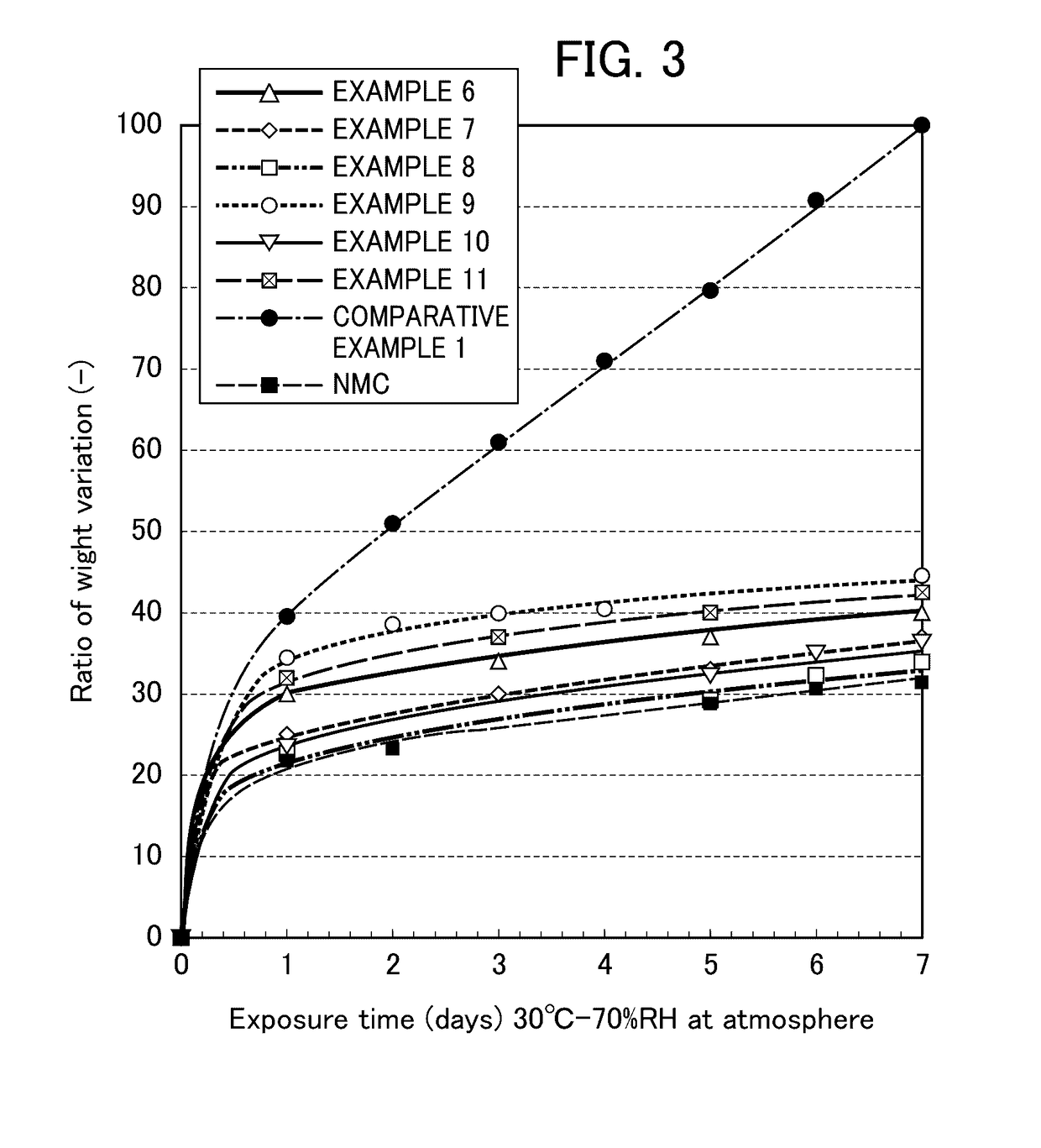Coated lithium-nickel composite oxide particles and method for producing coated lithium-nickel composite oxide particles
a lithium-nickel composite oxide and composite oxide technology, which is applied in the direction of nickel compounds, batteries, cell components, etc., can solve the problems of lithium-nickel oxide safety, cycle characteristics, and the use of lithium-nickel oxide as a practical battery
- Summary
- Abstract
- Description
- Claims
- Application Information
AI Technical Summary
Benefits of technology
Problems solved by technology
Method used
Image
Examples
example 1
[0127]0.14 g of a modified polyethylene resin solution was dissolved in 150 g of ethanol, and into the resultant mixture, 16 g of toluene was further added and mixed to prepare a coating solution. This solution was transferred to a flask, and as nickel-based lithium-nickel composite oxide particles, 25 g of the composite oxide particles represented by the transition metal composition of Li1.03Ni0.82Co0.15Al0.03 was placed in the flask and mixed to prepare a slurry. Next, the flask in which the slurry had been placed was connected with an evaporator, and under reduced pressure, the flask part was placed in a water bath warmed to 60° C. and the solvent was removed while rotating the flask. In the end, in order to remove the solvent thoroughly, the powder was transferred to a vacuum dryer, and dried at 100° C. for two hours under reduced pressure to prepare processed powder.
[0128]Using the nickel-based lithium-nickel composite oxide coated with modified polyethylene in an amount of 0.2...
example 2
[0129]0.14 g of a polyester resin solution (product name: ARAKYD 7005N) manufactured by Arakawa Chemical Industries, Ltd. was dissolved in 150 g of toluene, and into the resultant mixture, 16 g of isopropyl alcohol was further added and mixed to prepare a coating solution. This solution was transferred to a flask, and as nickel-based lithium-nickel composite oxide particles, 25 g of the composite oxide particles represented by the transition metal composition of Li1.03Ni0.82Co0.15Al0.03 was placed in the flask and mixed to prepare a slurry. Next, the flask in which the slurry had been placed was connected with an evaporator, and under reduced pressure, the flask part was placed in a water bath warmed to 60° C. and the solvent was removed while rotating the flask. In the end, in order to remove the solvent thoroughly, the powder was transferred to a vacuum dryer, and dried at 100° C. for two hours under reduced pressure to prepare processed powder.
[0130]Using the nickel-based lithium...
example 3
[0131]0.1 g of a polyphenol resin solution (product name: ARAKYD 7104) manufactured by Arakawa Chemical Industries, Ltd. was dissolved in 150 g of xylene, and into the resultant mixture, 16 g of isopropyl alcohol was further added and mixed to prepare a coating solution. This solution was transferred to a flask, and as nickel-based lithium-nickel composite oxide particles, 25 g of the composite oxide particles represented by the transition metal composition of Li1.03Ni0.82Co0.15Al0.03 was placed in the flask and mixed to prepare a slurry. Next, the flask in which the slurry had been placed was connected with an evaporator, and under reduced pressure, the flask part was placed in a water bath warmed to 60° C. and the solvent was removed from the slurry while rotating the flask.
Subsequently, the preset temperature of the water bath was set to 60° C., and the toluene was removed. In the end, in order to remove the solvent thoroughly, the powder was transferred to a vacuum dryer, and dr...
PUM
 Login to View More
Login to View More Abstract
Description
Claims
Application Information
 Login to View More
Login to View More - R&D Engineer
- R&D Manager
- IP Professional
- Industry Leading Data Capabilities
- Powerful AI technology
- Patent DNA Extraction
Browse by: Latest US Patents, China's latest patents, Technical Efficacy Thesaurus, Application Domain, Technology Topic, Popular Technical Reports.
© 2024 PatSnap. All rights reserved.Legal|Privacy policy|Modern Slavery Act Transparency Statement|Sitemap|About US| Contact US: help@patsnap.com










